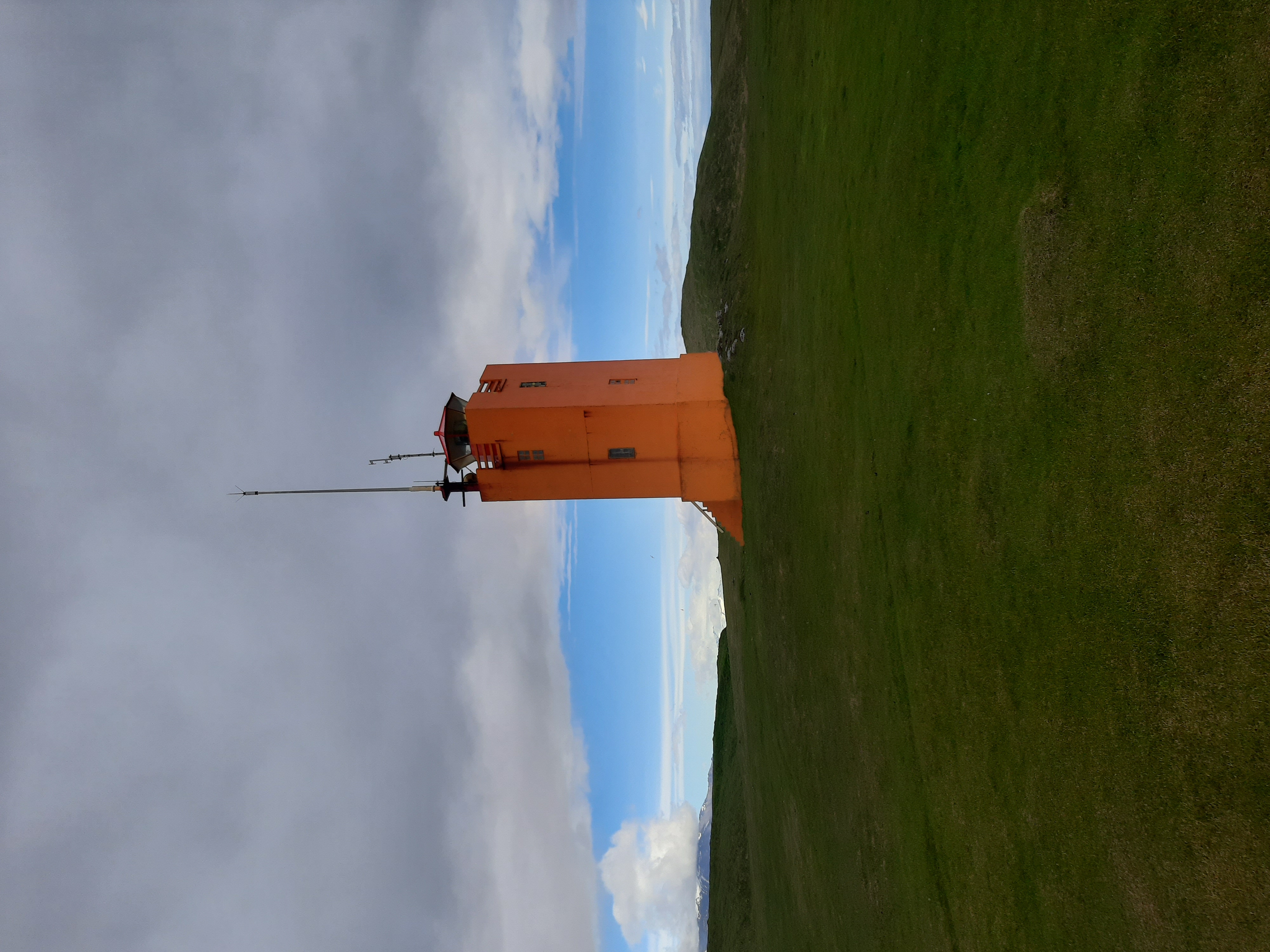Vinna við nýjar heimasíður Umhverfis- og orkustofnunar og Náttúruverndarstofnunar er í gangi. Heimasíða Umhverfisstofnunar er virk á meðan vinnunni stendur. Information in English
Culture and history
Culture
Ingólfshöfði is named after the settler Ingólfur Arnarsson who sailed, along with his wife Hallveig, from Norway to Iceland and landed his ship by the cape and stayed there for the winter.
According to legend, they lived at Höfðanef on the eastern and northernmost part of the cape. It is said that north of the cape was a fjord, and that’s where Ingólfur landed and tied his ship to Selaklettur. This is believed to have occurred in the year 874.
Þorsteinn Jóhannsson in Svínafell (1918–1998) wrote verses to help his students remember events from Icelandic history. The first verse is a reminder of Ingólfur’s settlement.
“Eight hundred and seventy and in addition four
Ingólfur built his settlement and we started keeping score.”
A columnar basalt stack was built in the cape in 1974 in remembrance of Ingólfur’s settlement. It reads:
“Ingólfur came ashore, where now is called Ingólfshöfði. Landnámabók (Icelandic Book of Settlements). Eleven centuries remembrance 1974.”
Ingólfur later settled in Reykjavík, where his highseat pillars were found, which he threw overboard in order to lead him to a place to live.
Close to the Ingólfur Arnarsson monument is a cairn that Björn Gunnlaugsson had built in 1839 when he was surveying in Ingólfshöfði. The place names Skiphellir and Árabólstorfa in the northern part of the rock suggest that there were once fishing grounds in Ingólfshöfði. In the rock by Árabólstorfa is a cave called Púki. Word of mouth has it that this cave is where the fishing gear was stored when the cape had fishing grounds.
It is believed that a glacial outburst in Skeiðará in 1774 destroyed the harbour east of Ingólfshöfði, after which fishing ceased from there. At the beginning of the year 1903, a German trawler, Friederich Albert, stranded in Svínafellsfjara. 11 days after the trawler stranded, Sigurður Jónsson, farmer at Orustustaðir in Vestur-Skaftafellssýsla, was out looking for his sheep.
He noticed an unfamiliar movement down on the beach, so he rode closer. He then saw that it was a man crawling on all fours, exhausted, his clothes frozen on his body and his shoes completely destroyed. Sigurður brought the man immediately back to town and gathered a group of men to search for the other shipwrecked sailors that he knew were out on the beach. Eight men were found alive; most had severe frostbite on their hands and feet. Bjarni Jensson in Breiðabólsstaður in Síða, the county physician, and Þorgrímur Þórðarsson, doctor in Borgir in Nesjar, among others, came to the shipwrecked men’s aid, as some of them had to undergo amputation due to frostbite.
These shipwrecked men’s horror and suffering led people to attempt to prevent such things from ever happening again. So in 1904, a shipwreck shelter was built in Skeiðarársandur, the first of its kind in Iceland, and in 1912, one was built in Ingólfshöfði, mostly thanks to D. Thomsen, merchant and German consul.
In 1917, improvements were made to the harbour at Ingólfshöfði by Eiríksnef. A gap was blasted into the rock, a winch fastened (still visible), with a wire cable, which lay across the rock. In this way, goods were to be unloaded from cargo ships that would dock in front of Eiríksnef. These improvements to the harbour would not be used, since they were destroyed in rough seas that winter.

The first lighthouse in Ingólfshöfði was built in 1916. It was made from angle irons and had become very weathered when a new, concrete lighthouse was built in 1948, designed by the engineer Axel Sveinsson.
An aeronautical radio beacon was built in 1974, and an electric light and a radio beacon were installed in the lighthouse at the same time. The aeronautical radio beacon is a VOR owned by the Civil Aviation Administration in Iceland and controls approach flights and domestic flights to Hornarfjörður.
“State electricity” arrived in Öræfi in 1974, until which time people relied on electricity from home generators that were built in the county after 1922.